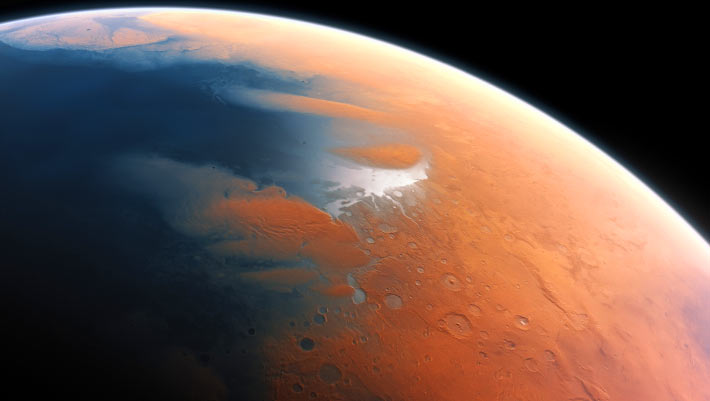
The distribution of valley heads on Mars matches predictions for a climate that includes precipitation rather than just runoff from melting ice caps.

New observations of mud cracks made by NASA's Curiosity rover show that high-frequency, wet-dry cycling occurred in early Martian surface environments.

French researchers suggesting that the tallest volcano in Solar System, Olympus Mons on Mars was once a volcanic island, surrounded by a deep sea.

A Martian meteorite that crashed in Morocco 11 years ago contains a vast diversity of organic compounds, which could help researchers discover if Mars could have hosted life and provide important clues about Earth's geological history.

4 billion year old Nitrogen containing organic molecules has been discovered in Martian meteorites. This finding suggests a wet and organic-rich early Mars, which could have been habitable and favorable for life to start.

The molecules were extracted by the Curiosity rover from a mudstone section of the Gale Crater. Scientists have concluded that we can't rule out those molecules actually have a biological origin.